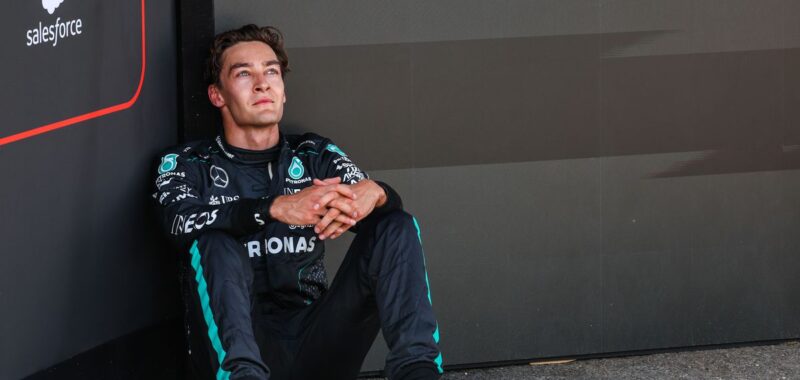For a time on Sunday, it looked as if George Russell, in a Formula 1 season filled with the improbably, had pulled off the impossible. While the majority of the field opted for a two-stop race at the Belgian Grand Prix Russell was one of the few who managed to come home with just one stop. But while others just finished the race or scored a few points, Russell took the checkered flag as the winner of the Grand Prix, holding off teammate Lewis Hamilton down the stretch on 34-lap old hard tires.
However, following the celebrations and the press conferences, Russell was disqualified, after a post-race inspection found that his W15 failed to reach the minimum weight. Specifically, Russell’s Mercedes was 1.5 kilograms (approximately 3.3 pounds) below the legal minimum weight limit of 798 kilograms (approximately 1,759 pounds).
Immediately, questions were asked regarding the disqualification, and how this could have happened. Many focused on the fact that the one-stop strategy could have led to increased tire wear, and given the lack of a cool-down lap at Spa Russell’s tires did not have the time to pick up additional rubber off the track over that lap to reach the minimum weight required under the rules.
Mercedes, after promising a full dive into what happened, has offered up some preliminary findings. In a video released by the team on Tuesday, Trackside Engineering Director Andrew Shovlin addressed the disqualification.
“Obviously it’s very disappointing and unfortunate, particularly after he’d driven such a strong race to win from so far back,” began Shovlin. “Right now we’re trying to understand exactly what happened.
“A lot of that involves us getting the weights of all the different components. The car can lose quite a lot of weight during the race. You get tire wear, plank wear, brake wear, oil consumption. The drivers themselves can lose a lot and in this particular race George lost quite a bit of weight.
“Now, the cars started the race the same weight. Lewis and George were both weighed after qualifying, the cars were within 500 grams. George’s was the only one that had the problem and it’s because things like the tire wear was much higher. It looks like we lost more material on the plank.”
“We’ll collect all that data, look at how we can refine our processes because clearly we don’t want that to happen in the future.”
Shovlin also addressed the notion that the lighter car meant improved performance for Russell. The engineer brushed that aside, noting that any performance gain was minimal at best.
“In terms of pace at the start of the race, it’s nil [gain], because George’s car and Lewis’s car started the race at the same weight,” said Shovlin.
“Obviously, as George’s car was losing weight faster than Lewis’ throughout the race, there is an associated gain with that, but you’re into hundredths of a second per lap. It will be very small because when you’re talking about amounts like one or two kilos, they don’t amount to a lot of lap time.”
The focus on plank wear is interesting, given the team’s recent history. At the 2023 United States Grand Prix it was Hamilton who was hit with a disqualification, after a post-race inspection found excessive wear on the plank below his W14. That cost Hamilton, who finished second, a podium finish. Charles Leclerc, who finished third last year in Austin was disqualified for the same reason.

